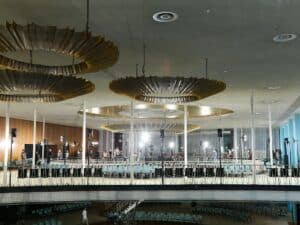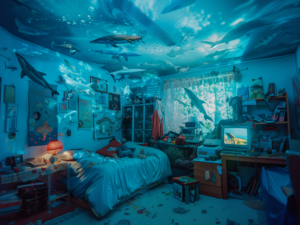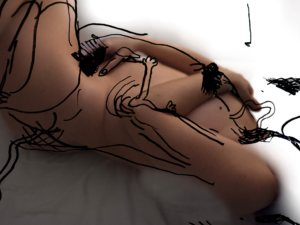He doesn’t have to find us. We find him.
Helmut Lang has forever been one of my favorite designers. This hasn’t changed. And he hasn’t changed much either. I find this to be a beautiful thing. He has found his own dark little niche and is comfortable enough to stay there, relying on the support of his avid followers, rather than trying to reach as many trendy new customers as possible. He doesn’t have to find us. We find him.
I get just as many remarks on the Helmut Lang pieces I have of his that are 15 years old, as I do on the pieces that are brand new. 15 years old is not yet vintage. It hasn’t had time to circle back around yet. The pieces still feel relevant, they are just that good. 10 years ago I purchased a black cotton very (VERY) deep V neck blouse at a secondhand shop in the East Village. 10 years later, he created a very similar piece: same stark navel grazing proportion, same sleeveless cut, same hipbone length, but this top came in black silk with a teeny tiny optional belt that could be closed to minimise nip slip (or not!) It was a practical revamp. While it didn’t garner any new interest or produce new inspiration than it originally had ten years ago, I bought it again. It was incredibly similar, yet it made more sense than its original conception. That is the beauty of his practice: his designs are made smarter rather than totally new. I wear one of these tops on a weekly basis.
In 2010- around the same time I bought that first Helmut Lang blouse in the East Village- the Helmut Lang atelier in downtown New York caught fire and it burned everything it contained. All the fabrics, all the prototypes, all the sketches were gone with it. The one-offs, the attempts, the failures, the not-yet-successes were laid to waste and were spared no sentimentality. No one could have prepared for this. And even if we had…?
In the aftermath, Helmut Lang observed the rubble. He saw his garments taking on new forms of artwork. No more wearable garments. An “accidental call of the void” inspired Lang to destroy further anything and everything in his atelier that could even be resembled as wearable. He pushed it all through an industrial shredder, compressing what remained into long branches and trunks. Nature has the power to destroy; man has the power to resurrect.
These sculptures are now on view at the Museum of Contemporary Art in Westport, Connecticut. 63 pillars fill the open gallery space in grid-like formations, reminding viewers that while what they are observing may look natural, it is a forest formed by a man pushed to the brink, who came out of the flames victorious.



